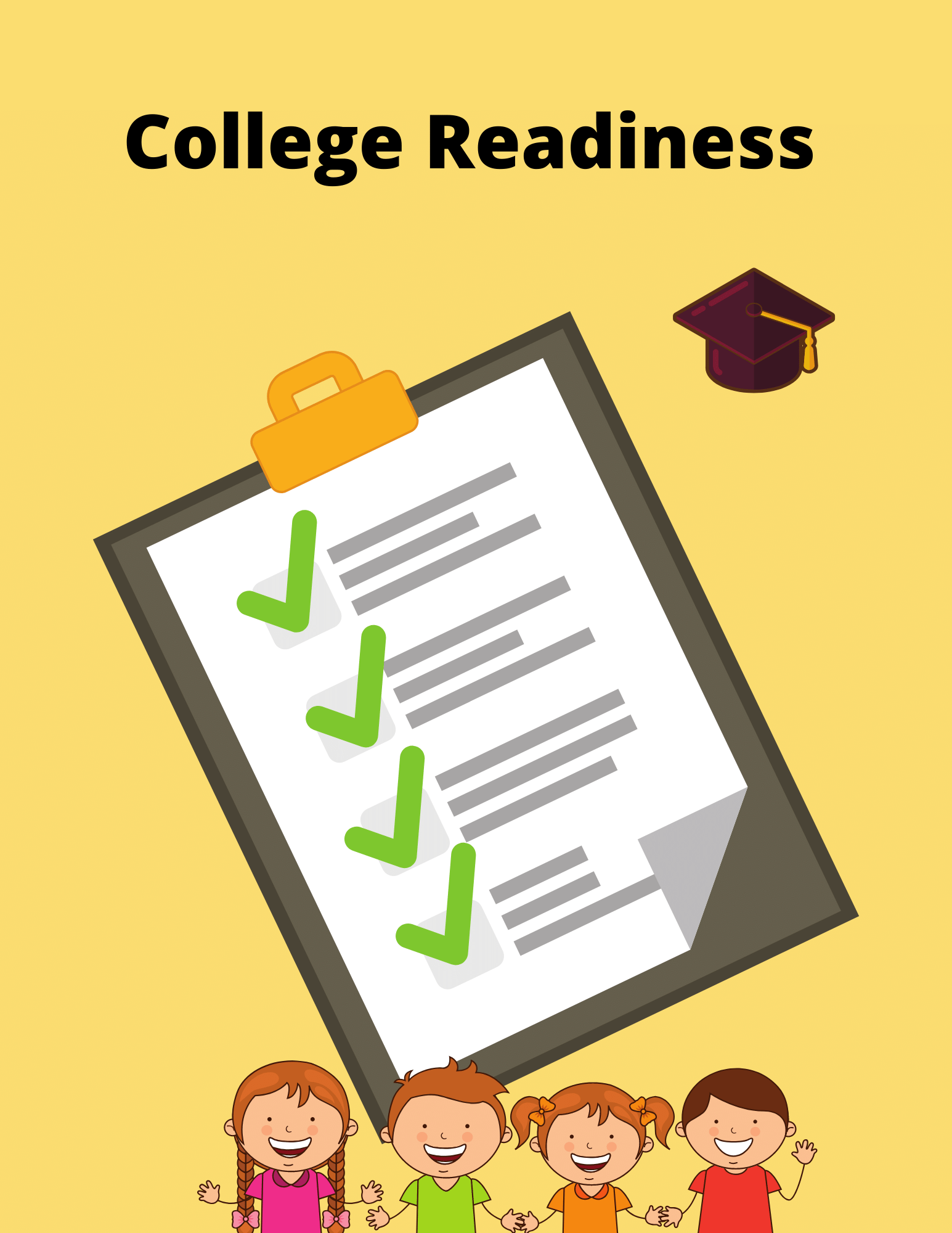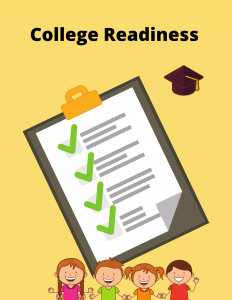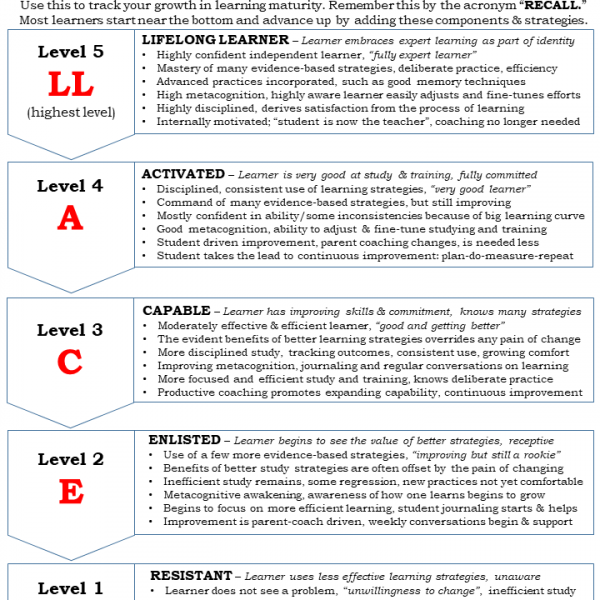
College Readiness – Are You Overlooking These Things?

Reading time: 11 minutes
Summary
We know college-readiness is an important goal for most homeschoolers. But how can you know, with certainty, that your child has it, and what more do you need to do to make this happen? College-readiness is more than checking off items on the college admissions criteria checklist. It requires expanding the learning capacity of the child to prepare them to perform the college-level work of the future.
The science of learning helps us know how we expand capacity. Many parents are fooled by their child’s early successes and assume the Illusion of Future Capacity. This article explores how to expand this learning capacity to succeed in college, the importance of getting involved in your child’s study methods, and how to deal with the common problem many college freshman encounter. Use this information to lead a deeper conversation with your child on college-readiness and studying smarter.
You have a short and easy to use instructor’s guide at the end – use it to lead a discussion.
What Enables Readiness?
For most, we tend to think about college readiness as those things defined by the admission requirements of the colleges you apply to. Most of the time these are known – they are already written for you. But there is more to this picture. Let’s begin by examining the Cambridge Dictionary’s definition of readiness:
“Willingness or a state of being fully prepared for something. . . your muscles tense in readiness for action.”
From this, two more factors are included in the definition of college-readiness: willingness and fully prepared.
Willingness translates into a student’s confidence when they know they can perform the work to meet and exceed college requirements.
Fully prepared means the student has the right tools and has spent time practicing them, so they are ready to skillfully perform the work.
Confidence combined with real capability together create college-readiness.
Two Categories of College-Readiness
From the big perspective, college-readiness has two actionable categories:
- The Qualifications to Get In – That which is necessary to qualify the student for admission; the things the college wants them to complete and demonstrate knowledge of to get in.
- The Success Factors to Flourish – The skills and habits the student must have to work to higher academic standards once they get there; the things they need to do to be successful.
Since the college provides the first, we should focus on the second. Getting in is important – but staying there and succeeding is another matter. Parents and students who devote most of their time working on the qualifications may end up with an imbalanced student absent the skills needed to thrive.
A More Complete Definition of College-Readiness
To have a more complete definition of what college-readiness is, we should ask these questions:
- What makes a student capable of performing college-level work?
- What skills and habits does the student need to do more demanding work successfully?
Independent Study and Workload
Let’s examine the challenges the entering freshman will face. What produces the biggest shock to new students encountering the new college environment? First, they must learn to navigate an entirely new world of independent study and self-guided work. Most colleges provide little or no hand-holding for the culture-shocked student. At this level, most learning occurs from independent study and projects.
Second, college is a difficult adjustment because of the increased workload. To the entering freshman, it’s a shock – much like trying to drink out of a firehose. The amount of information your child is expected to absorb and learn in a short time is suddenly a magnitude or so higher than a few months before. This means the unprepared student is presented with a potential learning capacity problem, there is more work than they are equipped to handle.
The Bandwidth Problem
An engineer or management professional views this workload situation as a “bandwidth problem.” It’s similar to cramming too much information or fluid through too narrow a tube. When this happens, things start to back up, and the pressure increases to a point where the tube might break. The obvious solution would be to “widen the tube” to increase the capacity to easily handle the increased volume – but how does a student “widen this tube” to increase their learning capacity?
The “narrow tube” or “bandwidth” problem is solved when students know how to use better evidence-based learning strategies that enable more efficient and faster learning – and acquiring and getting comfortable with these skills well before college.
| What is overlooked is the student’s expertise and skills in managing his or her own learning. |
In the research of Cal Newport, author of Deep Work, he observed that better students adopted better learning strategies for dealing with the increased work – they weren’t smarter. They didn’t need to solve the problem by working past midnight. He found, because of their better skills, the “A” students studied less!
Three Things You Need to Do
There are three things you should do.
- Decide to get involved in your child’s study methods and serve your child as a learning coach. Most parents seem reluctant to do this, most likely because they don’t feel comfortable with the idea of directing homework efforts, or because they don’t know how learning works any better than their kids do. You need to decide this is important enough to want to tackle the job of a learning coach.
- Your second action is to inject the discipline of a planning and improvement process with active conversations about study intentions, efforts, and outcomes. You need to set aside time to talk about the intended learning outcomes and how the child plans to achieve them. You need a vehicle to help you get better. Businesses and organizations know the value of planning and reviewing progress and use this to great effect. I know you may be thinking – it seems overwrought to apply these formal management tools to one’s family life. But I think it makes incredible sense. Why would you attempt one of life’s great summits – expert learning – absent a mindful and intentional approach?
- The third is improving learning capacity by equipping your child with better tools – by encouraging the skillful use of better learning strategies. You need to help your child discover more powerful ways to learn. Then you need to support the active practice of these strategies until they become comfortable habits. Follow author Stephen Covey’s advice from his well-known 7 Habits of Highly Effective People about his seventh habit – sharpening the saw. With your supportive coaching, your college-ready student not only will have the learning skills, but through frequent use keeps them sharp.
Beware the Illusion of Future Capacity
 Our beliefs about capacity can lead to faulty thinking. Well-known coach and author Marshall Goldsmith wrote a powerful book on successful careers entitled “What Got You Here Won’t Get You There.” On career development, a cousin of college-readiness, he provides insight into our assumptions.
Our beliefs about capacity can lead to faulty thinking. Well-known coach and author Marshall Goldsmith wrote a powerful book on successful careers entitled “What Got You Here Won’t Get You There.” On career development, a cousin of college-readiness, he provides insight into our assumptions.
The paradigm for success shifts as one advances up the academic ladder. The tools that work for the present fifth-grade student won’t work well for the future college student. Goldsmith says when the conditions change greatly there’s the potential to be fooled by the illusion of future capacity. Because it worked in the past, we believe it will work in the future – ignoring the vastly different conditions. We caution not to fall into the trap of thinking a good student now will be a good student on the college campus.
Returning to our starting point of college readiness – it may be difficult to know with certainty if your child has it. But not impossible, the knowledge you gain from this course about learning will help you get your child there. The “secret” ingredient lies in the evidence-based learning strategies.
| Stated simply – harder problems demand better tools. |
Emphasize “Efficient” Learning
One last point considering learning capacity, you want to strive for both effective and efficient learning. The efficient learner gets more done in less time – this is a goal you both need to embrace. Too often these terms are confused and commingled. For example, when a high school student studies something and learns it – he feels successful because it worked! But – what if it took him 3X effort and time to learn it?
We know his learning is effective, but it’s not efficient – and worse, he likely has a problem he doesn’t recognize. Without a parent coach intervention, he will be in for a surprise when the college academic firehose turns loose. Efficient learning comes through the use of better learning strategies and methods, supported by your encouragement.
Remember – you want to prepare your kids for success by building greater capacity.
Conclusion
A better way create real college-readiness includes focusing on the capacity to do college-level work. From the big perspective, you must address two components to college-readiness – what does it take to get in, AND what does the student need to thrive while there?
You address the predictable bandwidth problem of college freshman by improving independent study and building capacity to deal with the higher workloads.
You should recognize the student needs better tools because the tools of middle and high school will not serve as college tools – they only provide an illusion of future capacity.
And as Stephen Covey reminds us – we should sharpen the saw through practice and repetition until these new skills become comfortable habits.
There are three things you need to do to help your child be college-ready.
- Commit to getting involved as a coach,
- Start a regular planning process to encourage improvement,
- Emphasize the acquisition of better evidence-based learning strategies
The good news is you can coach your child to learn a much higher capacity to learn. Consider taking our online Pa 10 course – Improving Your Child’s Learning Power. In this course you will learn how to do all three. You can gain the college-readiness you seek by taking our online course Improving Your Child’s Learning Power.
Instructor’s Guide: Key Terms to Discuss
What do these terms mean?
- Readiness
- Independent study and Self-guided work
- The Discipline of Planning
- Improving Learning Capacity
- Strive for Efficient Learning
- Bandwidth Problem
- Illusion of Future Capacity
- Sharpen the Saw







